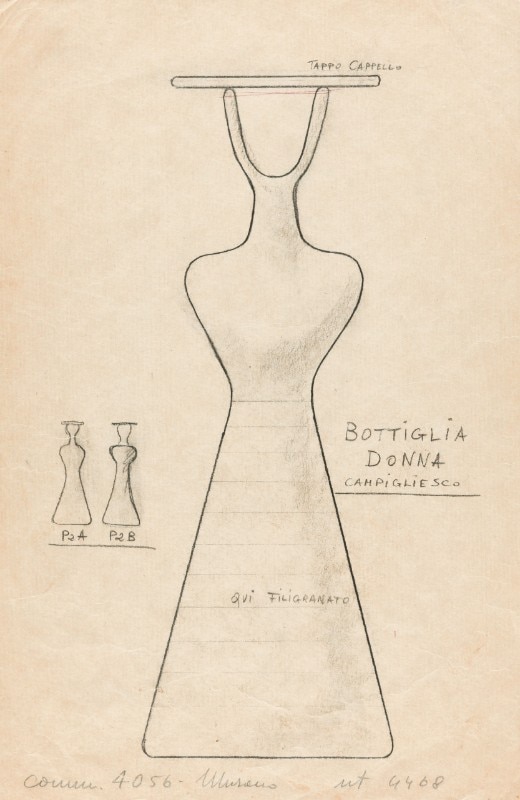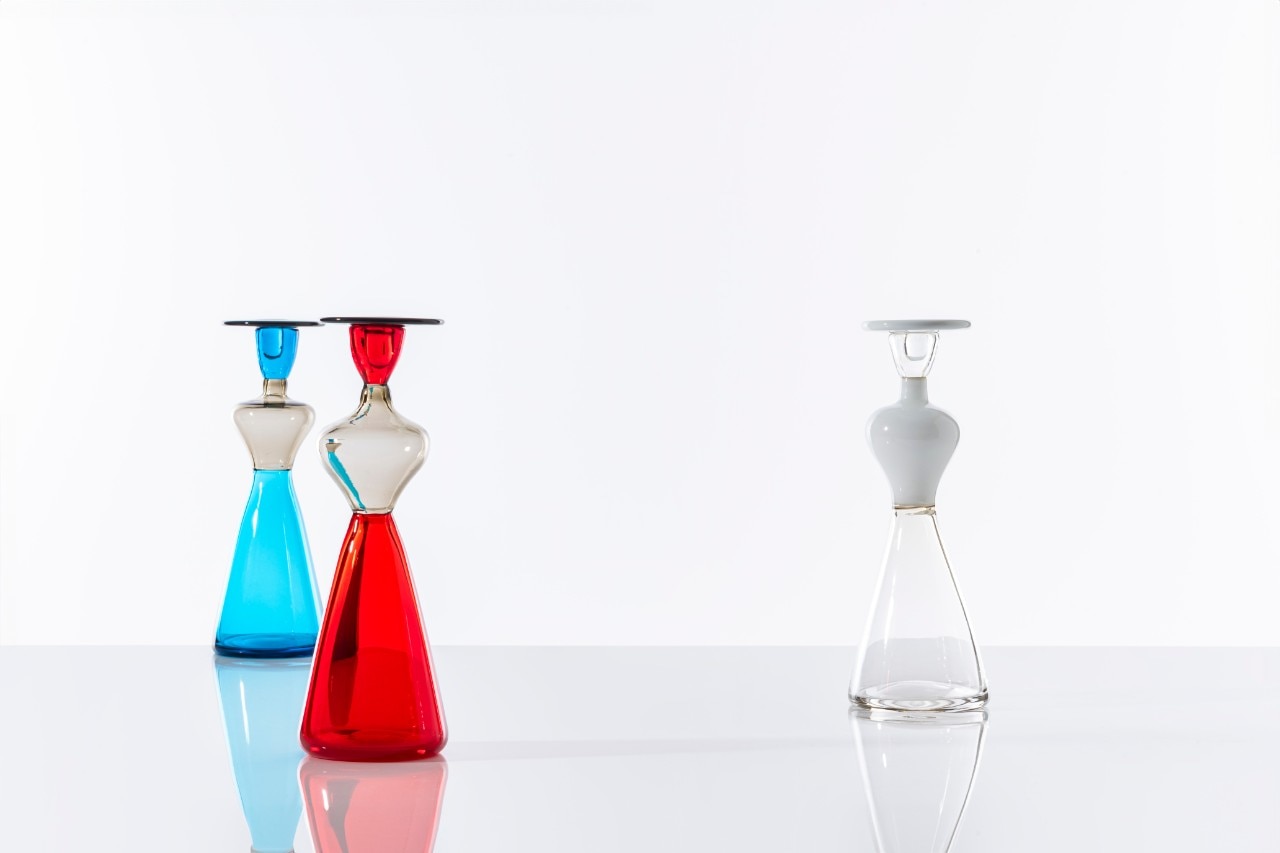This article was originally published on Domus 1093.
Gio Ponti had a penchant for certain materials such as ceramics and glass, which he designed and used in his architecture as he considered them to have exciting expressive potential. He also favoured certain artists such as Massimo Campigli, Giorgio Morandi and Fausto Melotti, whose art with ancient echoes shaped a new modernity.
Between the 1940s and 1950s, the Milanese architect developed a synthesis between art and craftsmanship thanks to his collaboration with the historic glassworks of Paolo Venini, with whom he worked on a series of anthropomorphic bottles with graceful and elegant feminine features, like miniature sartorial mannequins. This “cheerful game”, as Domus called it (Domus 231, 1948) was so successful it represented the art of glassmaking at the “Italian Design” exhibition that travelled to the USA between 1950 and 1953.
Originating from the desire of 12 American museums to display the diverse expressions of Italian craftsmanship, the show was keenly promoted by the editor of Domus, who described it as “an exemplary, generous and meticulous undertaking”, “a civilised gesture to safeguard all the world’s values”, and presented readers with a wide selection of furnishings, items in terracotta, ceramic and straw, as well as mosaics, lamps, enamels and fabrics (Domus 252, 1950). One of the objects presented in America was the successful Donna Campigliesca series of bottles, where Ponti experimented with the forms, colours, materials and art of his much-revered painter (from whom he also commissioned a family portrait, exhibited at the major Ponti retrospective in Paris in 2018).

The pencil-on-paper drawing from the Venini Archive shows the bottle’s profile with its sinuous but delicately shaped contours. An almost primitive human silhouette, it recalls the female figures depicted by Campigli and his references to austere and poetic Etruscan art. The indication “qui filigranato” specifies the bottle’s different finish, created with the age-old incalmo (or “grafting”) technique that makes it possible to forge glass objects with two or more areas of different colour. Indeed, the Dama Campigliesca is made up of four parts: three for the body and the fourth as the “hat stopper” that crowns the form.
The words that Lisa Ponti used to convey Campigli’s communicative strength and his allusion to Etruscan art – “an expressive power contained in an enigmatic, hermetically closed form without holds” (Domus 269, 1952) – also seem apt to describe the shapes her father designed for Venini. Today, the historic glassworks proposes the Dama bottles in different colours: with a transparent taupe bust, with an aquamarine blue or red skirt and face, and a transparent version with a bodice and hat in opaline glass.






